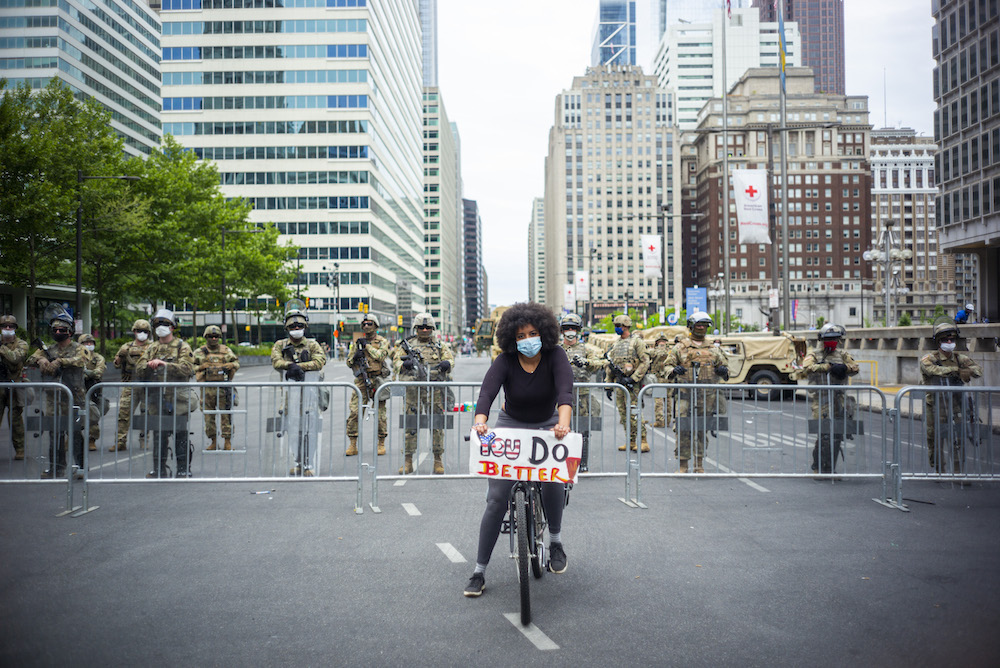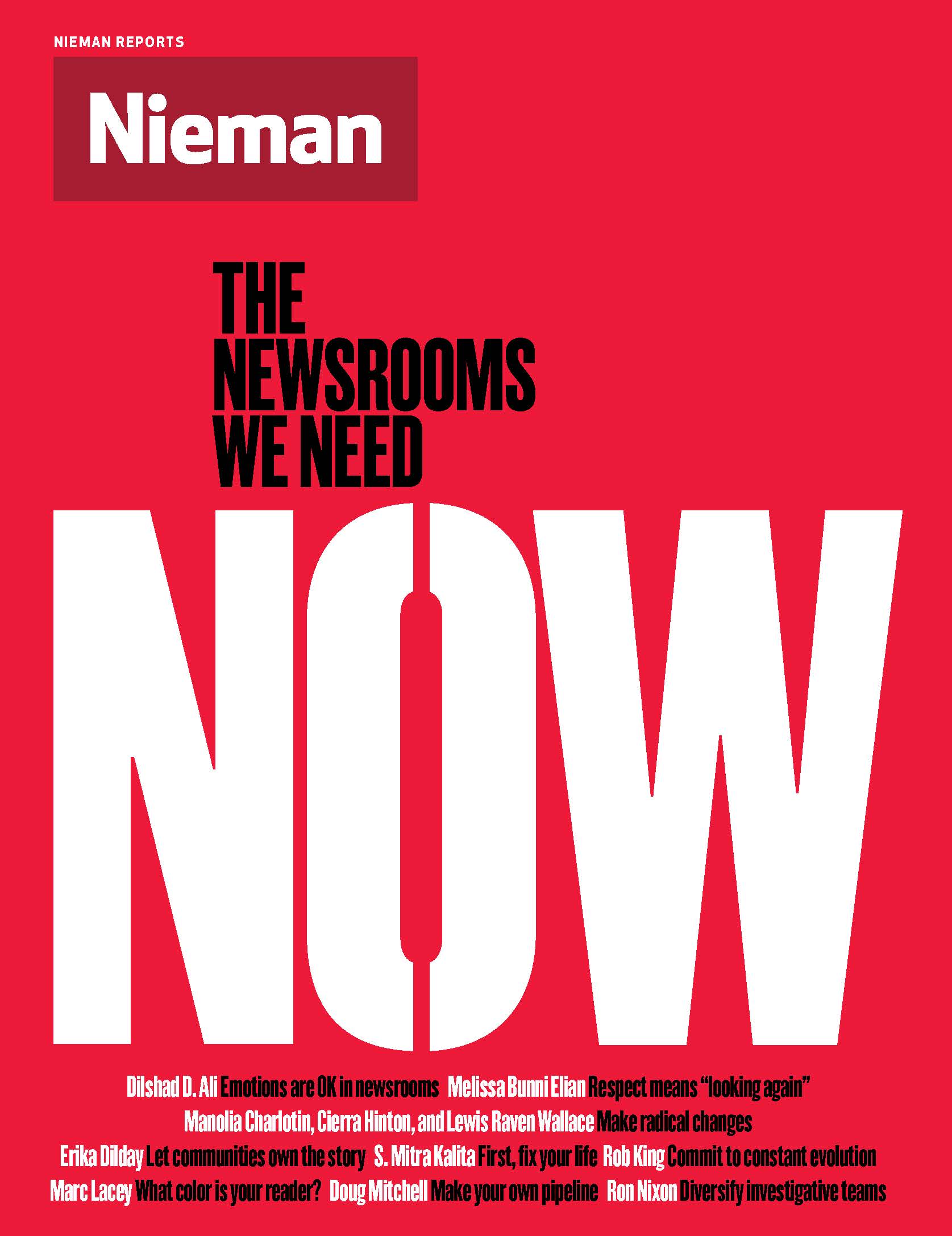
Lauren Coursey, 26, protests in front of a line of Pennsylvania National Guard outside City Hall on May 31, 2020 in Philadelphia, Pennsylvania
Dear Journalism. Those two words formed the silent call I heard throughout the summer as anguish over George Floyd’s killing and an amplified Black Lives Matter movement forced a news industry reckoning. Yes, there was deep pain and disillusionment in many of the nation’s newsrooms, powerfully expressed by Philadelphia Inquirer journalists who protested the paper’s egregious “Buildings matter, too” headline by organizing a “sick and tired” day. But these weren’t journalists turning their backs on the profession. These were journalists whose demands expressed a longing. Dear Journalism: Do better.
“I spent some of the happiest and most productive years of my life working for The New York Times,” tweeted Lydia Polgreen about a Times op-ed calling for the use of federal troops against protesters. “So it is with love and sadness that I say: running this puts Black @nytimes staff—and many, many others—in danger.”
The essays collected here reflect both that devotion and disappointment and demand to be read by us all. Nieman Reports asked each of these contributors what the industry needs to do to meet the challenges of this moment; to accelerate the advancement of journalists of color; to create equitable newsrooms; to improve coverage of racism. Individually, they offer hard-earned insight into structural problems plaguing newsrooms that undermine our news gathering and success. Collectively, they represent decades of bearing witness to inequality and thinking about what would make us stronger. What these journalists prescribe is not simple, but all of it is achievable.
“If you are looking at this reckoning on race and trying to change your newsroom, I’m going to ask you to do something harder: Take a critical look at your own life,” writes S. Mitra Kalita of CNN. “There are no easy answers to solve for diversity, equity, and inclusion. There is only the work.”
In her piece, Futuro Media’s Erika Dilday points to historic moorings that have shadowed journalism, of professional norms authored by groups that “were overwhelmingly, and at times exclusively, white, privileged, and male.” The conventions that spring from those roots can be as basic as how you picture and speak to your audience. Quick: what is the race of your reader?
Times national editor Marc Lacey asks and answers the question. “For too long, readers in the mainstream media have been presumed to be white,” he writes. “White is the norm. And the writer helpfully lets us know when someone or something strays from that norm. The writer points out that the mayor is Black. But the city councilman’s race is left unstated two paragraphs later. A neighborhood is described as predominantly Hispanic but another area has no racial identifier at all. Someone is described as being classically beautiful or having all-American looks. Hmm.”
Kalita, Dilday, Lacey, and others are generous, offering a resistant industry a path forward. Implores ESPN’s Rob King: “Let’s please get to work.”


